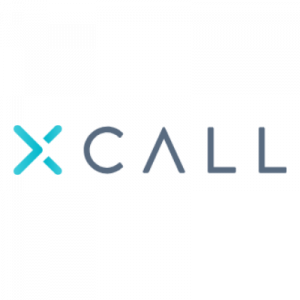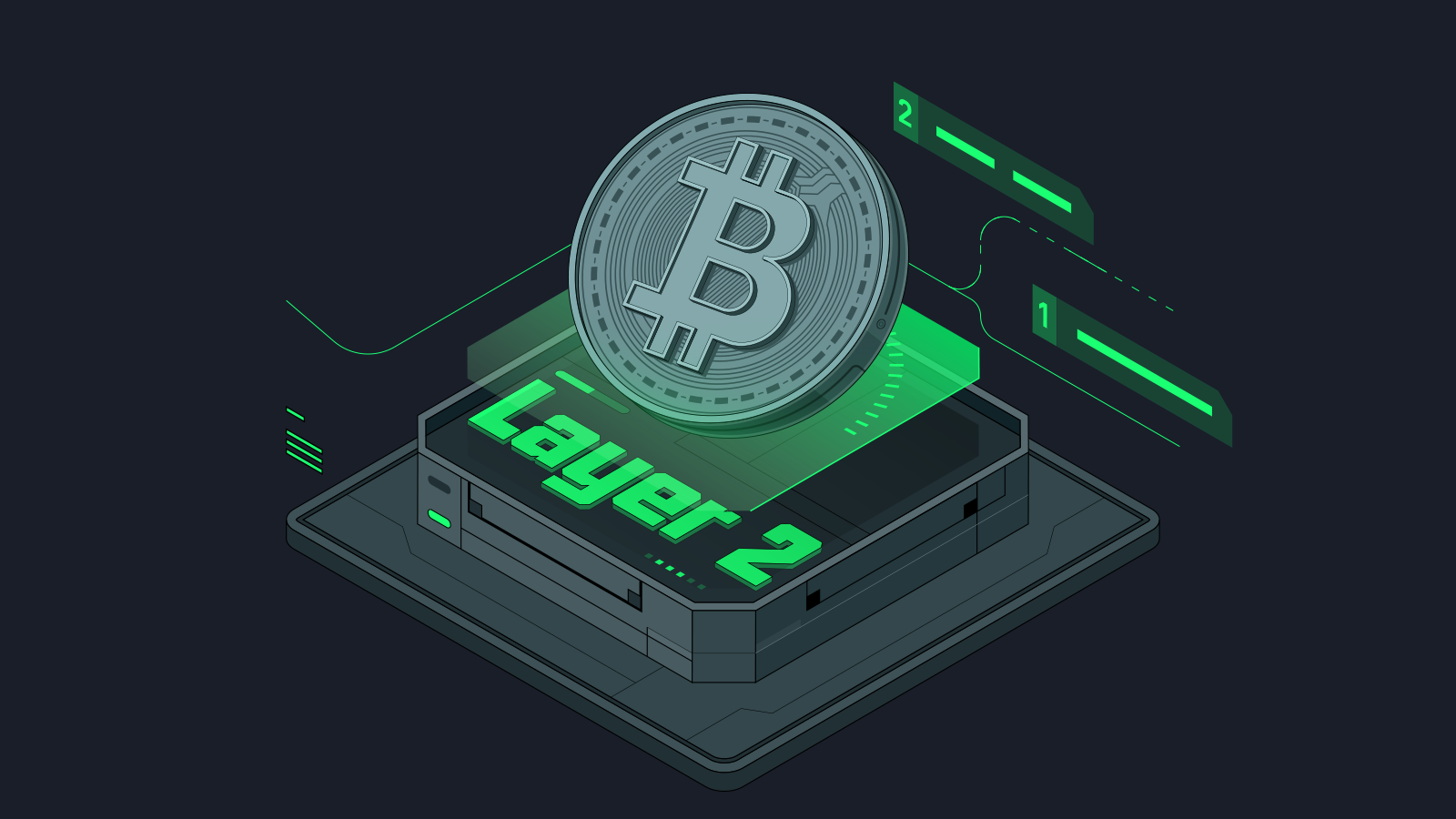The apparent necessity for compatibility between Optimism and Arbitrum rises as Layer-2 solutions—especially Optimism and Arbitrum—become more rapidly popular
Layer-2 scaling solutions center on Ethereum’s difficulties, especially with regard to high transaction fees and lengthy processing times under network congestion. Layer-2s offer quicker and more affordable transactions by off-peak shifting of transactions off the main Ethereum blockchain and processing them on secondary layers. Making Ethereum usable to more people and practical for applications with significant transaction volumes depends on this strategy.
The possible and significance of reaching compatibility between Optimism and Arbitrum is investigated in this paper together with how this evolution might help the larger crypto ecosystem.
- 1 Deep Dive into Optimism and Arbitrum
- 2 The Need for Cross-Chain Compatibility Between Optimism and Arbitrum
- 3 Current Solutions for Bridging Layer-2s: Optimism and Arbitrum
- 4 Technical Challenges in Achieving Full Compatibility Between Optimism and Arbitrum
- 5 Understanding Differences in Rollup Architectures
- 6 Future of Compatibility Between Optimism and Arbitrum
- 7 Conclusion
Deep Dive into Optimism and Arbitrum
Understanding Optimism’s Rollup Mechanism
The optimistic roll-off technology of optimism runs on the assumption of default transaction validity. Under this approach, batches of transactions are aggregated and handled off-chain to free space and lower Ethereum mainnet gas consumption.
This roll-up approach only defies verification when absolutely necessary; if a transaction is contested, it passes via a mainnet fraud-proof process to guarantee that erroneous or malicious transactions can be rectified.
Adopting this innocent until proven guilty strategy helps Ethereum’s security be maintained without sacrificing performance by greatly reducing the volume of on-chain data.
Users of this technology have seen significant charge savings, hence Optimism is a good option for uses requiring quick and frequent transactions.
Reducing gas pricing and processing delays helps Optimism enable a variety of DeFi and dApps depending on Ethereum but hampered by high transaction costs.
Many consumers, however, are eager for the more compatibility between Optimism and Arbitrum, which would enable a seamless move between platforms without paying expensive fees or involved bridging procedures, so fully utilizing their potential.
Overview of Arbitrum’s Rollup Technology
Arbitrum offers its own touch on transaction security and verification even if it use hopeful roll-ups. Arbitrum’s method consists in a multi-round interactive fraud-proof mechanism.
A challenged transaction is divided out into smaller pieces that are subsequently checked across several rounds.
This approach keeps security and efficiency while letting Arbitrum more precisely identify false transactions. This interactive technique lowers the danger of expensive mainnet interactions, therefore enabling Arbitrum to provide low-fee transactions and more capacity.
Arbitrum’s technology is appropriate for systems managing significant transaction volumes since it gives scalability for complicated DeFi applications top priority. With its interactive fraud-proof system—which is both safe and effective—it offers strong assistance for projects needing sophisticated capability.
The quest for “compatibility between Optimism and Arbitrum” is expanding as users try to maximize the benefits of both platforms in a unified environment given growing demand for cross-platform interaction
Key Differences Between Optimism and Arbitrum
Optimism and Arbitrum approach transaction verification, speed, and cost efficiency differently even if they use hopeful roll-ups to reach scalability.
Unless challenged, optimism holds that all transactions are legitimate and enables simple roll-up batching using minimum on-chain data.
Depending on the activity of the network, this method can be susceptible to delayed fraud detection even if it is efficient for high-frequency applications necessitating low costs.
Conversely, Arbitrum guarantees any contested transaction is painstakingly examined in tiny chunks using a more thorough, multi-round verification procedure.
Though it can cause minor delays in dispute resolution, Arbitrum’s interactive fraud-proof approach helps it to keep security while scaling for demanding use cases.
While Arbitrum’s method is usually more complicated, facilitating large-scale projects requiring additional security, both platforms shine in lowering gas expenses relative to Ethereum.
Achieving “compatibility between Optimism and Arbitrum” could enable users to harness the unique capabilities of each, hence building a more unified Layer-2 environment whereby apps may smoothly interact across several roll-up networks as demand for interoperability rises.
The Need for Cross-Chain Compatibility Between Optimism and Arbitrum
Cross-Chain Transactions in the Ethereum Ecosystem
Smooth cross-chain transactions have become a top focus in the Ethereum ecosystem, particularly given more DeFi platforms are housed across several Layer-2 networks.
Moving assets, data, and smart contract information between chains rapidly and effectively is expected by users and developers more and more.
Layer-2 solutions like as Optimism and Arbitrum’s cross-chain interoperability would help to facilitate this by enabling direct, safe transfers free from significant reliance on the main Ethereum chain.
This feature is crucial for DeFi users managing assets across platforms, running cross-protocol strategies, and maximizing yield—all without the gas fees usually afflicting Ethereum’s primary network transactions.
Establishing compatibility between Optimism and Arbitrum would help the Ethereum ecosystem to provide a more linked experience, one that supports interoperability between apps, less traffic, and speedier transactions.
Benefits of Compatibility Between Optimism and Arbitrum
Achieving interoperability between Optimism and Arbitrum promises many advantages that can change the user experience on Layer-2 networks.
Users would first save on gas costs and improve transaction efficiency by moving assets across Layer-2s without routing via the Ethereum mainnet, therefore lowering fees.
DeFi events including trading, lending, and staking can be more easily accessible and appealing to a larger audience thanks to this lower cost and processing times.
Moreover, interoperability lets a wider spectrum of apps be built that can make advantage of both systems.
Developers might create hybrid apps that maximize the advantages of both platform by using Optimism’s simple transaction architecture in concert with Arbitrum’s improved security for various components of their dApps.
Because consumers now have access to a more varied spectrum of applications that run smoothly across both Layer-2 solutions, this cross-chain adaptability might greatly increase acceptance.
Current Solutions for Bridging Layer-2s: Optimism and Arbitrum
Different cross-chain bridges meant to enable asset and data transfers across several Layer-2 networks have evolved from the necessity for compatibility between optimism and arbitrum.
Understanding how these bridges function and looking at the particular tools at hand helps us to better grasp the present situation in cross-chain compatibility and the related trade-offs.
How Existing Cross-Chain Bridges Work
Blockchain bridges let data and assets flow across otherwise separated chains, acting as links across several networks.
These bridges either use liquidity pools to assist asset exchanges or lock tokens on the source chain and manufacture similar tokens on the target chain.
Bridges allow users to move money across Layer-2 platforms, such Optimism and Arbitrum, therefore avoiding the main Ethereum chain and lowering fees and wait times.
Bridges are crucial in strengthening interoperability between Optimism and Arbitrum and in enhancing the general Layer-2 user experience by offering this smooth transfer capability.
Existing Bridges Supporting Optimism and Arbitrum Compatibility
Several protocols and tools currently support cross-chain transfers between Optimism and Arbitrum, each with unique mechanisms and limitations:
- Hop Protocol: Hop Protocol allows users to transfer assets between Layer-2s through liquidity pools and automated market makers (AMMs).
By offering direct Layer-2-to-Layer-2 swaps, Hop reduces the need for mainnet interactions, providing a more efficient route for transactions.
However, the protocol’s reliance on liquidity can lead to slippage and fluctuating fees, especially during high-volume periods.
- Connext: Connext is another tool focused on enabling cross-chain compatibility, using a method known as “xCalls” to perform secure, efficient transactions between networks.

Connext supports the transfer of both tokens and generalized data, though its reliance on liquidity providers and routers introduces potential bottlenecks, impacting transaction times and fees during peak demand.
- Synapse Protocol: Synapse provides a cross-chain bridge with support for Optimism and Arbitrum, enabling quick transfers and lower fees through its liquidity pools.
While Synapse has gained popularity for its efficiency, it is still subject to liquidity risks and occasional slippage, which can impact transaction accuracy and user confidence.
While these tools enhance compatibility between Optimism and Arbitrum, they are not without their challenges. Limited liquidity, varying fees, and the potential for slippage are common issues users face when navigating between Layer-2s.
Pros and Cons of Using Bridges for Compatibility
Using bridges to enable compatibility between Optimism and Arbitrum offers several benefits but also introduces certain risks.
Pros:
- Increased Asset Mobility: Bridges allow users to transfer assets and data seamlessly across Layer-2s, enhancing their mobility without incurring high Ethereum mainnet fees.
- Broader Access to DeFi Applications: By facilitating Layer-2 interoperability, bridges empower users to explore a greater range of DeFi protocols across Optimism and Arbitrum.
- Efficient Resource Utilization: Bridges help minimize congestion on the Ethereum mainnet by enabling direct Layer-2 interactions.
Cons:
- Security Risks: Bridges are often targeted by malicious actors, making security a top concern. If a bridge’s smart contract is compromised, it could result in significant asset losses.
- Slippage and Liquidity Challenges: With most bridges relying on liquidity pools, slippage is a common issue that can lead to inconsistent asset values. Low liquidity may also restrict the bridge’s usability during periods of high demand.
Technical Challenges in Achieving Full Compatibility Between Optimism and Arbitrum
Achieving full compatibility between Optimism and Arbitrum requires overcoming several technical hurdles rooted in the unique architectures of each Layer-2 solution. While both platforms aim to enhance Ethereum’s scalability, their differing designs, security measures, and transaction mechanisms create barriers to seamless interoperability.
Exploring these challenges provides insight into what it will take to establish robust cross-chain compatibility in the future.
Understanding Differences in Rollup Architectures
The rollup architectures of Optimism and Arbitrum, while both classified as optimistic rollups, differ significantly in how they handle transaction verification and dispute resolution.
Optimism uses a simpler approach with a single-round fraud proof system, allowing transactions to be verified quickly but limiting the complexity of interactions it can handle.
Arbitrum, on the other hand, uses a multi-round fraud proof system, which provides a more intricate verification process that can handle complex computations but results in higher latency.
These architectural differences complicate efforts to create full compatibility between Optimism and Arbitrum, as cross-chain protocols must account for the variations in transaction speed, proof mechanisms, and data validation.
Bridging these structural gaps requires highly adaptive protocols that can synchronize these Layer-2s’ unique security models and transaction methods.
Security and Latency Concerns in Cross-Chain Transactions
Security and latency are two critical issues that impact the effectiveness of cross-chain transactions between Layer-2 solutions.
Cross-chain transactions introduce an added layer of risk, as they are susceptible to vulnerabilities within both networks and the connecting bridge.
As assets move between Optimism and Arbitrum, any security flaw in the bridge or in either Layer-2 could result in significant asset loss or exploitation.
Additionally, differences in fraud-proof verification times introduce latency, making transactions slower and less efficient, which can hinder user experience and deter adoption.
In an environment where each Layer-2 solution has its own security and latency protocols, achieving reliable compatibility between Optimism and Arbitrum will require solutions that can mitigate these risks.
Robust security frameworks and real-time monitoring mechanisms could play a vital role in enhancing cross-chain transaction safety and speed.
Future Innovations and Potential Solutions
Looking forward, a number of developments could help to overcome Layer-2 compatibility’s technological obstacles.
Emerging as a possible replacement for optimistic roll-ups with faster, more secure transaction validation techniques are zero-knowledge proofs (ZKPs).
By letting Optimism and Arbitrum check transactions instead than depending on conventional fraud-proof mechanisms, ZKPs could greatly lower latency and security risks.
Another area of emphasis is improved cross-chain protocols since they might allow more seamless asset and data flow between Layer-2s.
Projects are creating fresh bridge solutions especially meant to manage the special architectures of Layer-2 rollups, therefore offering a basis for more smooth compatibility between Optimism and Arbitrum.
As these technologies develop, they may open the path for a more interoperable and safe Ethereum ecosystem in which cross-chain interoperability rules rather than exception.
Future of Compatibility Between Optimism and Arbitrum
Ethereum’s Role in Driving Layer-2 Compatibility
Especially with major improvements like EIP-4844, Ethereum is important in enabling interoperability between Optimism and Arbitrum.
This suggested update, which brings “proto-danksharding,” seeks to lower data storage costs and boost Layer-2 solution efficiency so facilitating data flow between several chains.
EIP-4844 may enable more affordable and safe cross-chain communication between Optimism and Arbitrum by minimizing the cost of storing transaction data off-chain.
Furthermore, Ethereum’s more general shift towards Ethereum 2.0 with its emphasis on scalability and lower gas costs offers a basic framework for improved Layer-2 compatibility.
Industry Trends in Cross-Chain Compatibility
The rise of multi-chain and Layer-3 solutions reflects a growing demand for interoperability across the blockchain ecosystem.
As Layer-2 solutions like Optimism and Arbitrum mature, the next logical step is the development of Layer-3 protocols or multi-chain bridges that can span beyond individual Layer-2s.
These innovations will not only enhance compatibility between Optimism and Arbitrum but also extend interoperability to other Layer-2s and sidechains, ensuring that assets and data can flow freely between multiple decentralized networks.
We are already seeing projects and protocols actively working towards this vision, suggesting that cross-chain compatibility will continue to be a major focus for developers and the broader Ethereum ecosystem.
The Road Ahead for Optimism and Arbitrum Interoperability
Looking forward, stronger cooperation between the two projects will help to provide more “compatibility between Optimism and Arbitrum”.
The people behind every solution are already debating ways to guarantee their networks can cooperate effectively and increase interoperability.
Driven by both optimism and arbitrum, we can anticipate more standardized cross-chain protocols in the future to provide a single interface for Layer-2 interactions.
The continuous evolution of cross-chain solutions will be crucial to guarantee that Layer-2 technologies can operate together seamlessly, hence generating a more scalable and efficient decentralized web as Ethereum upgrades and industry trends drive towards a more integrated blockchain environment.
Conclusion
As Ethereum grows and changes, the compatibility between Optimism and Arbitrum becomes ever more important.
Two of the top Layer-2 solutions, Optimism and Arbitrum, are quite important in lowering gas costs, accelerating transactions, and improving the general DeFi user experience by means of their use.
The capacity to move data and assets between other platforms creates fresh opportunities for consumers and developers, therefore strengthening the linked and effective blockchain ecosystem.
These Layer-2s can help Ethereum flourish by attaining full cross-chain compatibility, therefore enabling distributed apps (dApps) to be more affordable, scalable, and accessible for everybody.
Looking forward, constant improvements to both Ethereum and Layer-2 technology will probably help to define “compatibility between Optimism and Arbitrum”.
We should expect a more flawless and safe cross-chain experience as Ethereum improves, such as EIP-4844 and new multi-chain solutions surface.
Users and developers should follow Ethereum’s roadmap, keep updated by actively tracking changes from the Optimism and Arbitrum communities, and investigate newly developing cross-chain protocols in the ecosystem.
The capacity to freely move data and assets between Layer-2s will become the pillar of Ethereum’s distributed future as these technologies develop.



